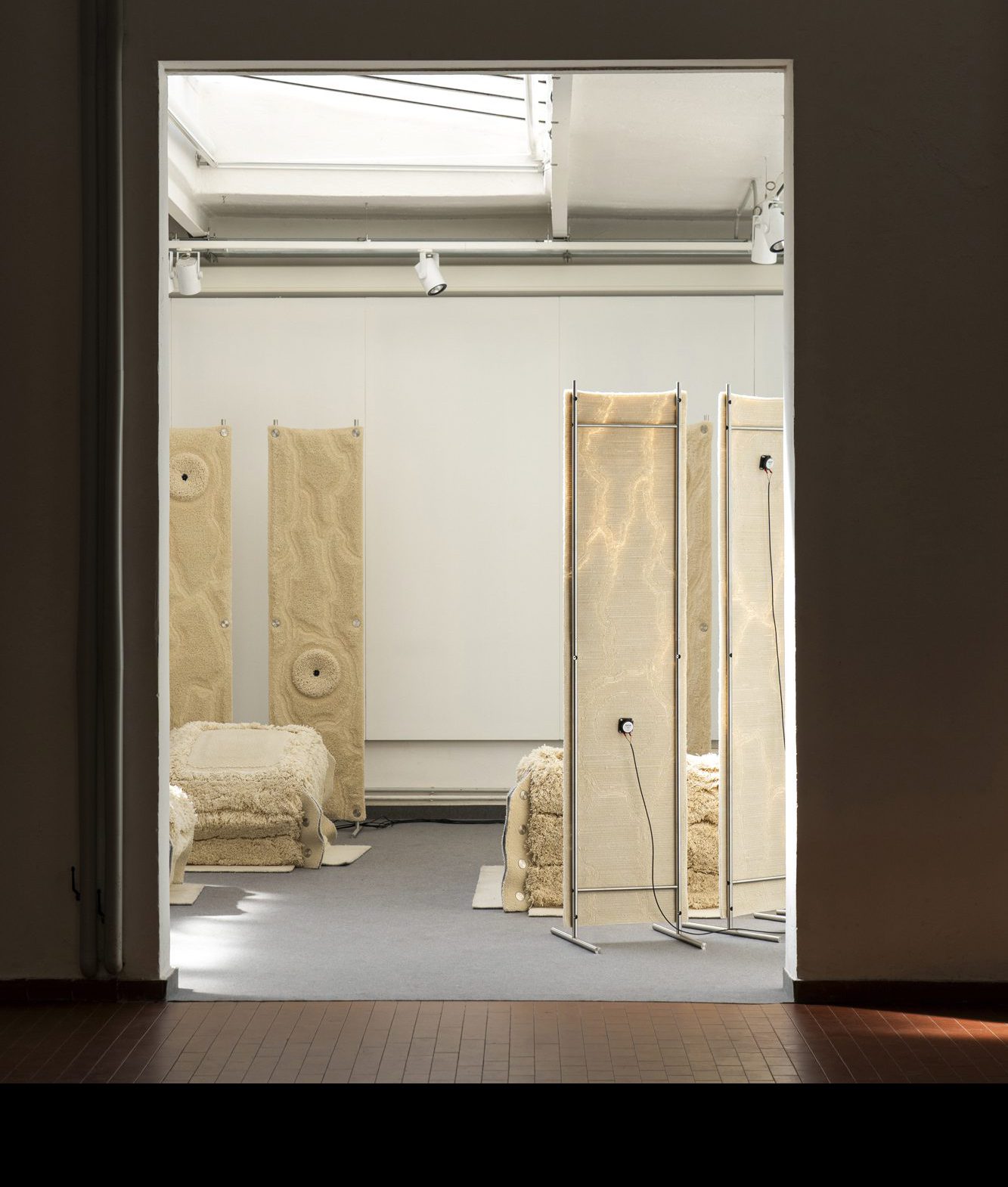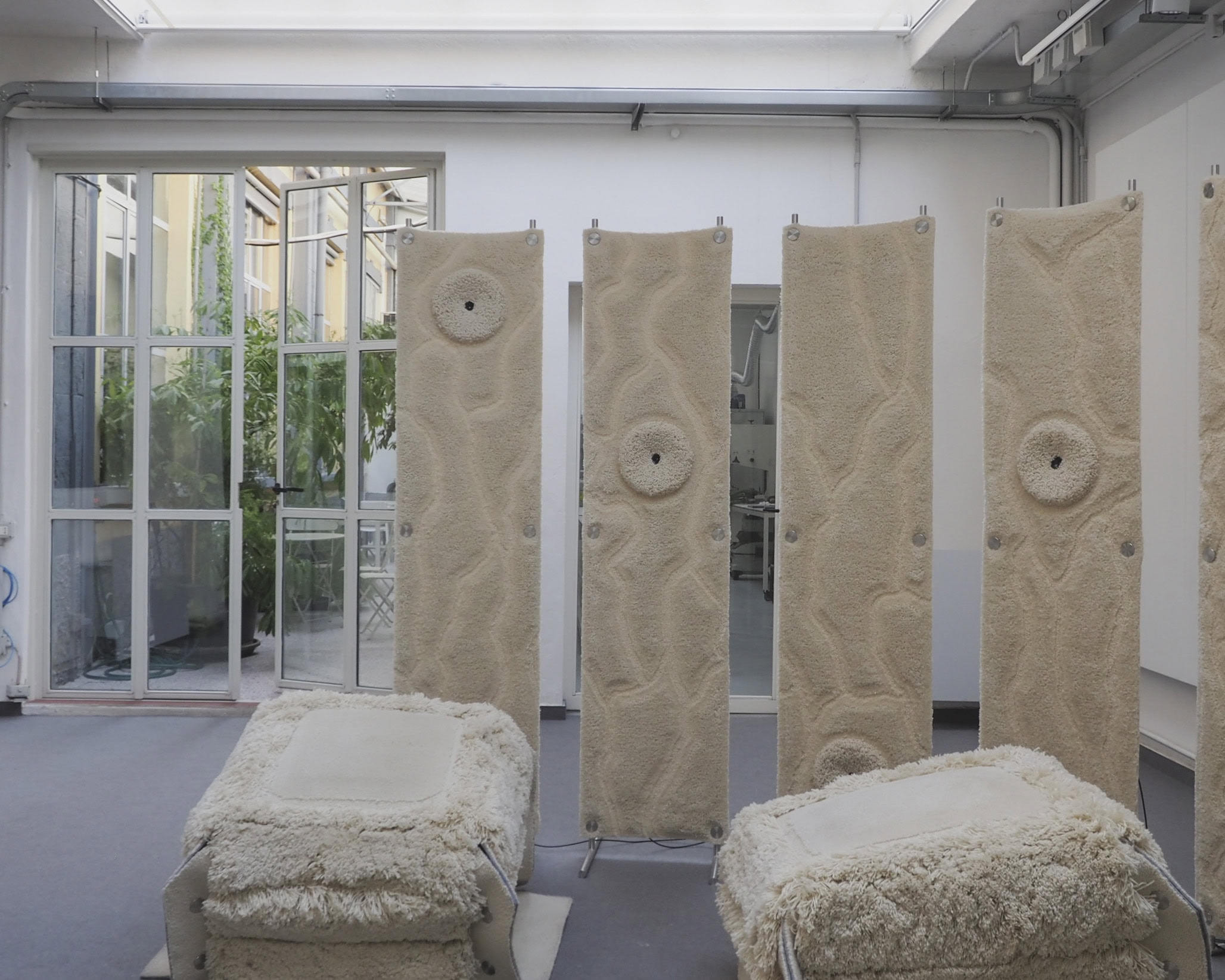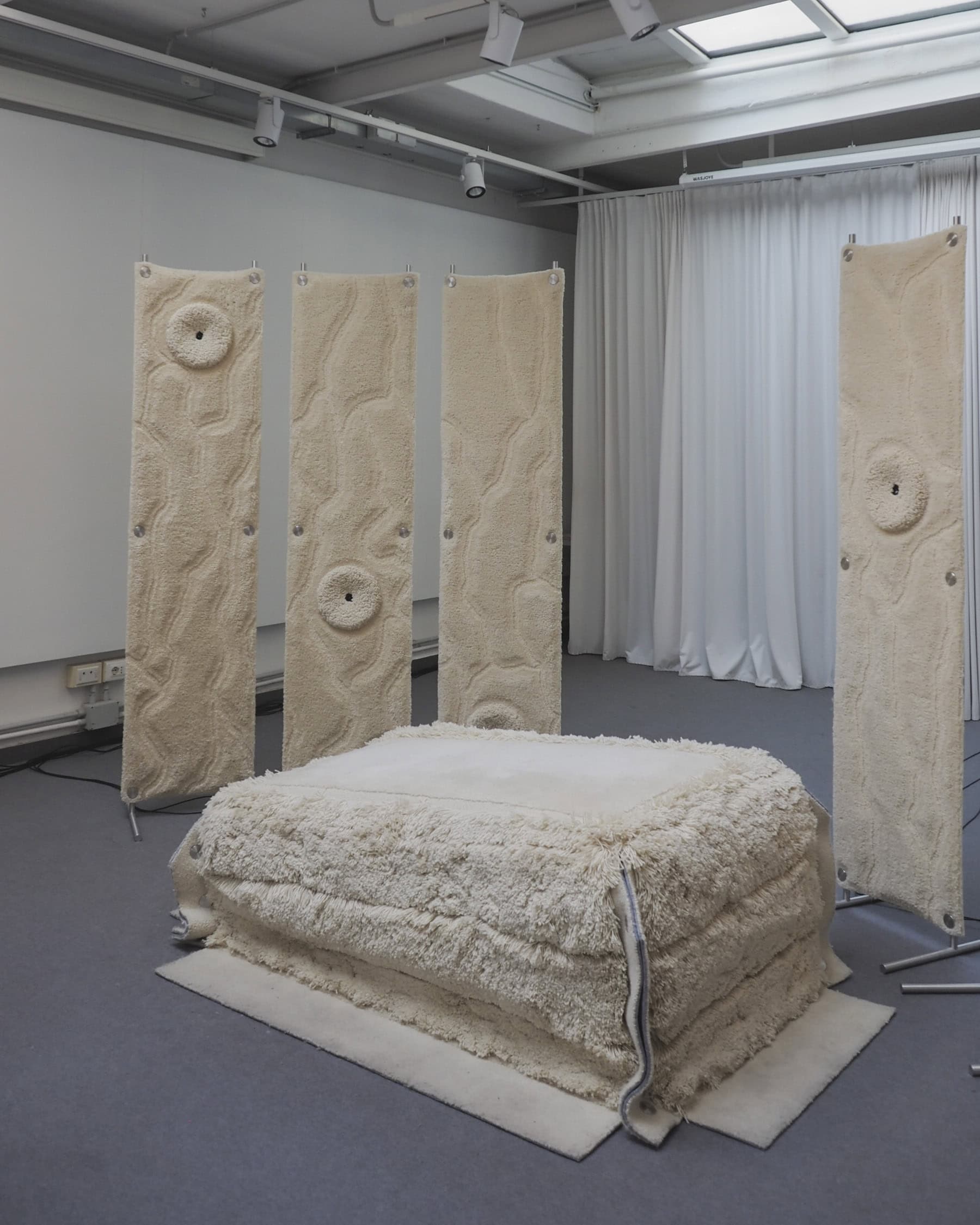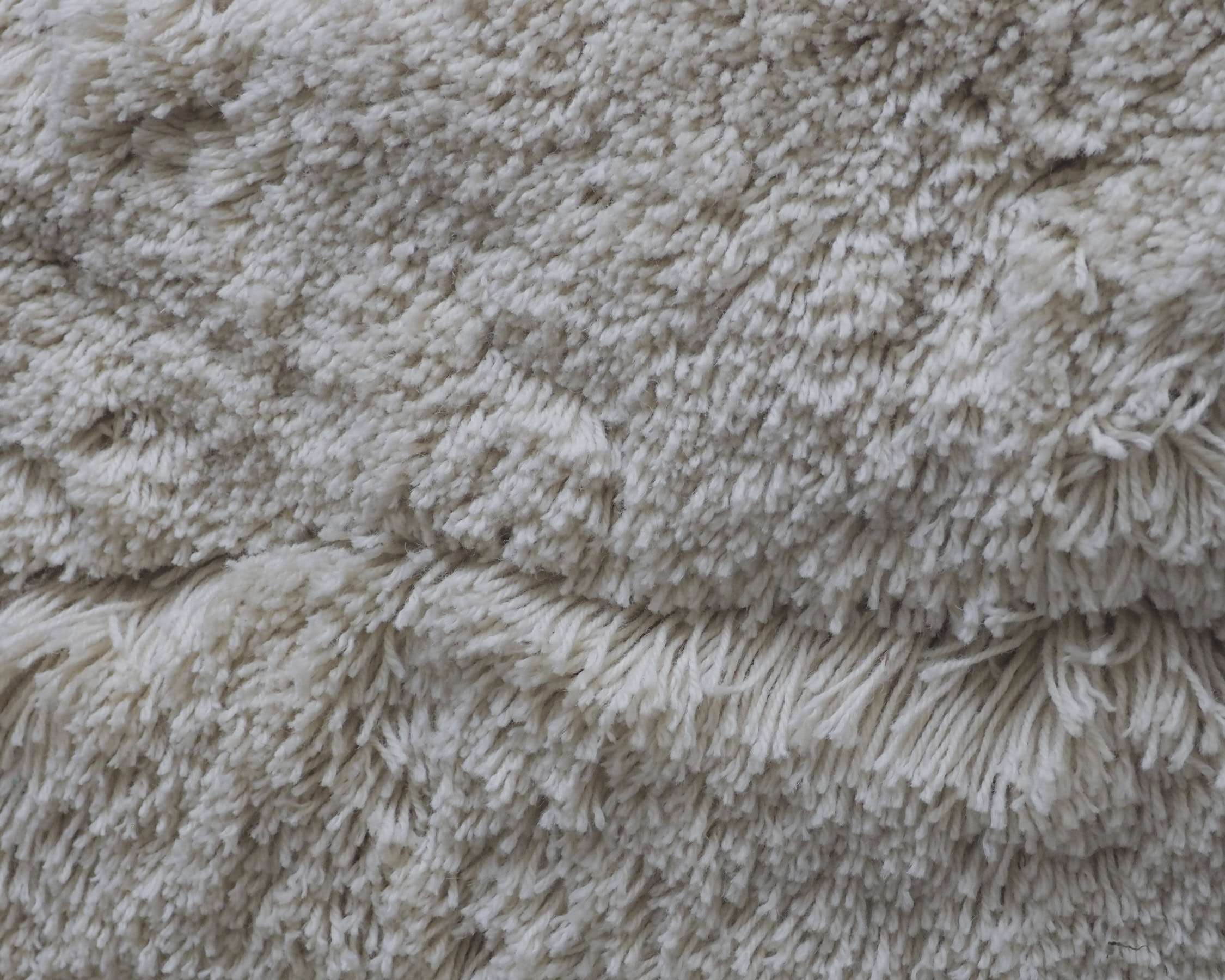During Fuorisalone 2024, duo Finemateria — composed of Gianluca Sigismondi and Stefano Bassan — unveiled, an immersive installation created in collaboration with cc-tapis and QuadroDesign. Blending design, sound, and bodily perception, the project invites viewers to slow down, pause, and rediscover the value of everyday gestures and living materials. We sat down with them to talk about rituals, scents, textures, and the generative power of boredom as a fertile space for imagination.
Ritamorena Zotti: PAFF PAFF evokes a daily and intimate gesture, like putting on slippers. How did the idea of using this gesture as a starting point for an installation come about?
Gianluca Sigismondi: The idea stemmed from a shared need: especially during the busy Salone weeks, when the city becomes an almost chaotic mass of people, we asked ourselves how to design a space that could offer a moment of stillness, both mental and physical. PAFF PAFF is conceived as a small nest, a “contagious” place for both body and mind — somewhere to pause, even alone, like in one’s personal studio. It’s not exactly a liminal space, but rather a meditative, almost domestic one — not a bathroom or a dining room, but a new kind of room. It could resemble a place to sleep, though it’s not a bed. It’s a space where time and presence expand, where you can slow down.
RZ: The project reveals a strong link between material and sensoriality. How did you work with wool, sound, and scent to build an immersive experience?
Stefano Bassan: We wanted to create a primordial environment, and wool immediately felt like the right material to evoke this dimension, cc-tapis was the perfect partner — they brought to Milan a CNC tufting machine, the only one of its kind in the world. It’s a technology that departs from the traditional handcrafting techniques they use in Nepal: everything here was produced locally, through automation, so it was a technical experiment both for them and for us.
GS: We designed two main elements: seating pieces that begin as flat carpets and become three-dimensional through studs and tension, and a series of twelve panels, each paired with a different sound. In collaboration with Park, we developed an audio system in loop, where natural sounds — cicadas, wind, bark, undergrowth — alternate organically, making every visit unique. The scent, inspired by natural wool and its ancestral memory, was an important new addition this year. It introduced a new warmth and depth to the entire experience.
RZ: PAFF PAFF is part of an ongoing exploration, which includes past projects like Vita Lenta, Bedtime Stories, and Bagno Diurno. How does this new work expand or evolve your thinking around well-being?
GS: With PAFF PAFF, we may be arriving at a sort of endpoint — or transitional stage — in a path that began with installations exploring slowness, care, and various dimensions of well-being. Here, we felt the need to propose a slightly different solution, working with new materials and ideas.
SB: The core remains the same: creating environments where people can slow down, listen to themselves, and simply be. But this time the result feels more structured, more systemic, and more easily replicable. It could definitely evolve further, even outside the context of Salone.
RZ: How did the dialogue with cc-tapis and QuadroDesign influence the final result of the installation?
SB: Working with cc-tapis was crucial: not only did they give us access to a unique technology, but the project also sparked an internal evolution for them. Some outcomes of this experiment are now also presented in their showroom in a simplified version. It was a very fluid and generative dialogue.
GS: The same applies to QuadroDesign: their very grounded approach allowed us to envision a systemic, replicable space — something that could potentially exist in a home, a studio, or a company, with modular elements adapted to different needs. It’s an installation, yes, but with a mobile, almost nomadic identity.
RZ: House of Finemateria is your new permanent space in Milan. What kind of synergy exists between a space like that and more temporary interventions like PAFF PAFF?
GS: Having a permanent space allows us to work more continuously, while projects like PAFF PAFF give us room to experiment with freer, more ephemeral formats. But there’s a strong connection between the two: the languages blend, and the research evolves. It’s an osmosis — what’s born in one space can reflect in the other, and vice versa. Sometimes something that appears temporary then takes on a lasting form, like what happened with the tufting technique we developed with cc-tapis, which is now part of their catalogue.
RZ: PAFF PAFF invites a “regenerative idleness” and slowing down. What role does boredom play in your work and in how you conceive spatial experience? Can it become a design resource?
SB: Absolutely. For us, boredom is a precious component: it’s the moment when intention and attention arise. When there’s no overstimulation, the mind opens, recalibrates. In PAFF PAFF, we worked precisely on this — creating a space that invites slowness, that encourages a different, deeper kind of breath. The panels are almost like tree trunks: each with its own character, vibration, sound. And wool represents the animal side — warm, tactile, alive. It’s like being in a barn: you stop, you warm up, and you stay. The space doesn’t rush you, doesn’t demand anything. It simply welcomes you. And in this slowness, a new kind of possibility emerges.





